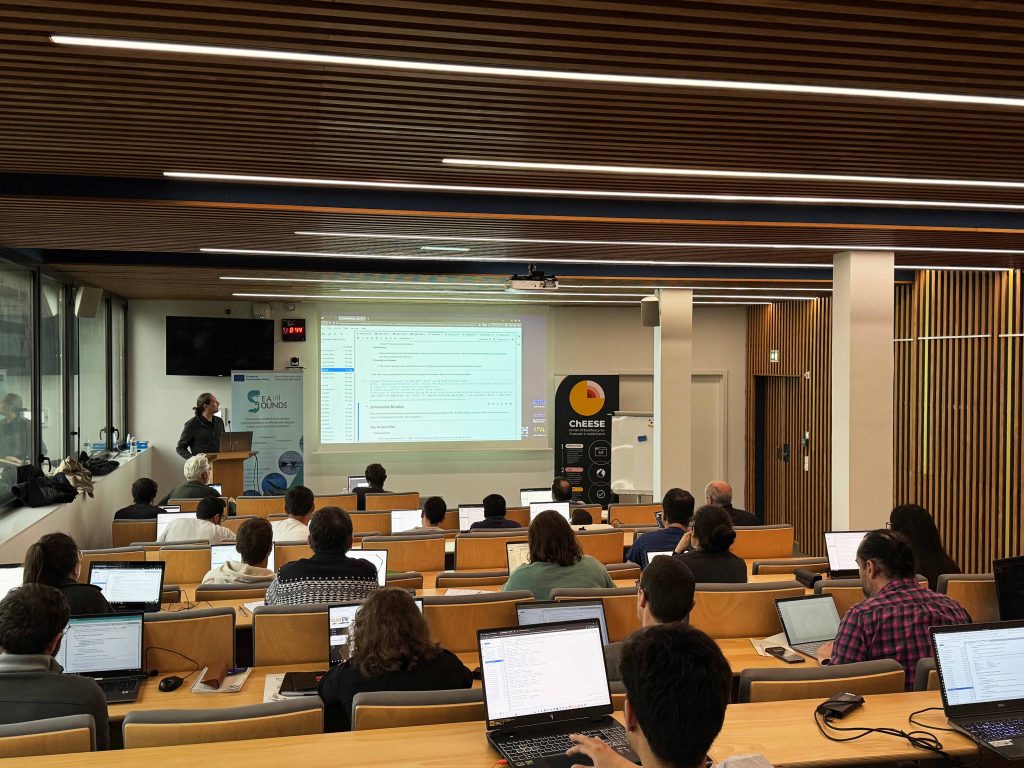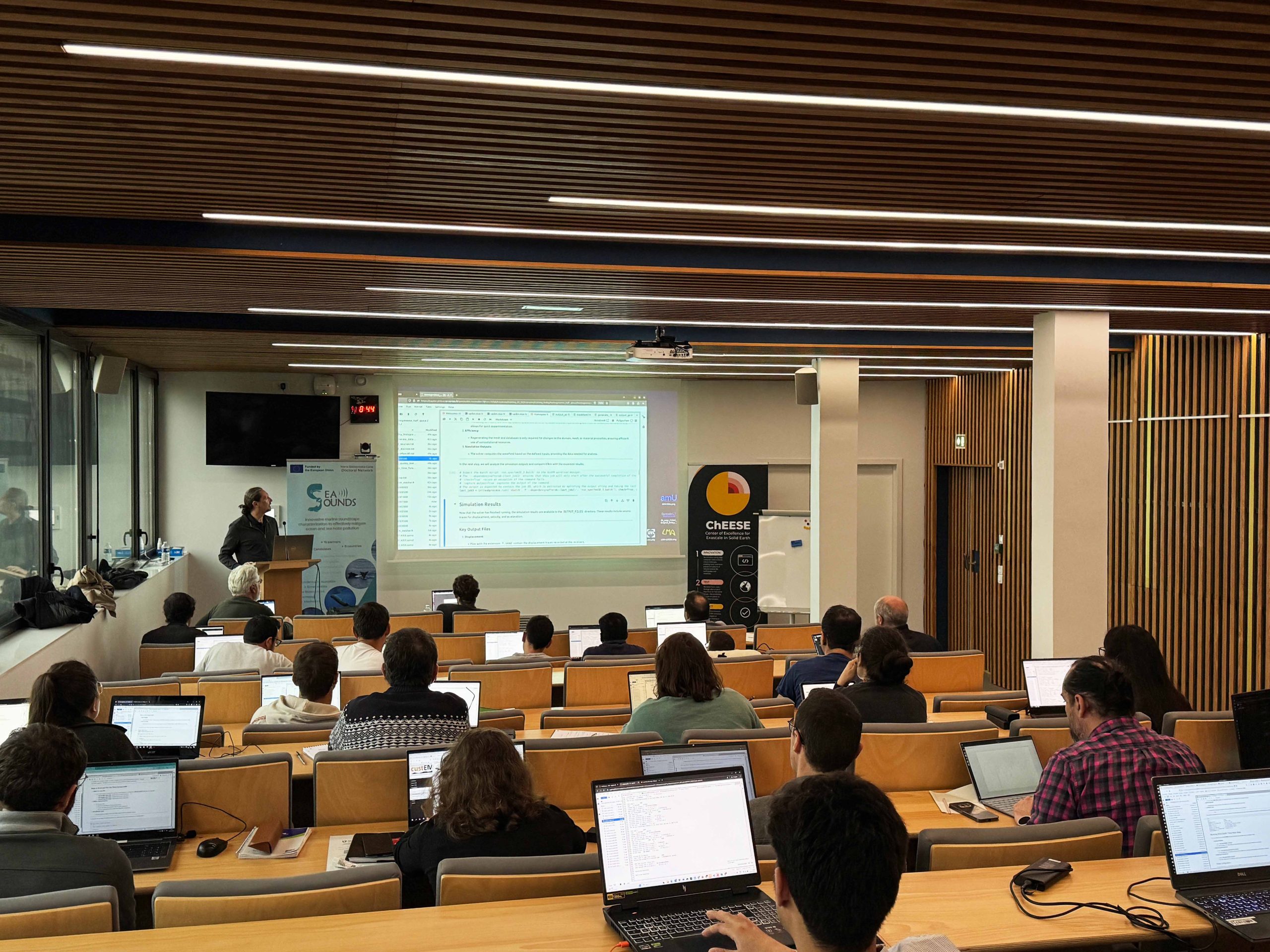Hosted at Nantes Université’s Faculty of Sciences and Techniques, the two-day session (22–23 April 2025) was packed with practical activities led by experts Yann Capdeville, Vadim Monteiller, Paul Cristini, and Maxence Ferrari.
The participants of the training promoted by the Centre of Excellence (CoE) for Exascale in Solid Earth – ChEESE, the SEASOUNDS project and NuTS were introduced to the fundamentals of the Spectral-Element Method (SEM) and walked through the complete setup of SPECFEM2D and SPECFEM3D, from downloading and configuring the codes to running simulations and comparing CPU vs GPU performance.
SPECFEM is a widely used open-source software that simulates seismic wave propagation on complex 2D and 3D geological models. Thanks to its precision and flexibility, it has become a reference tool in computational seismology, supporting both research and operational monitoring.
Beyond the technical deep dive, the training offered a fantastic opportunity for networking, capped off with a lively social dinner in the heart of Nantes.
Photos by: Laurine Tiran
Academic Staff:
- Paul CRISTINI (CNRS-LMA) is an acoustician working on the numerical simulation of wave propagation in underwater acoustics using high-performance computing. His research focuses on seismo-acoustics, specifically the handling of the elasticity of marine sediments. He has over 15 years of experience using the SPECFEM2D software.
- Maxence FERRARI(CNRS-LMA) is a bioacoustician specializing in marine mammals. He knows the ins and outs of SPECFEM as he is developing a new version of Specfem from scratch based on Kokkos in the ChEESE-2P project.
- Vadim MONTEILLER (CNRS-LMA), with over 10 years of experience in SPECFEM3D, has focused on the development of full waveform inversion techniques and contributed to optimizing the code. His work includes porting SPECFEM3D to GPUs, improving its performance for large-scale simulations on modern supercomputers.












